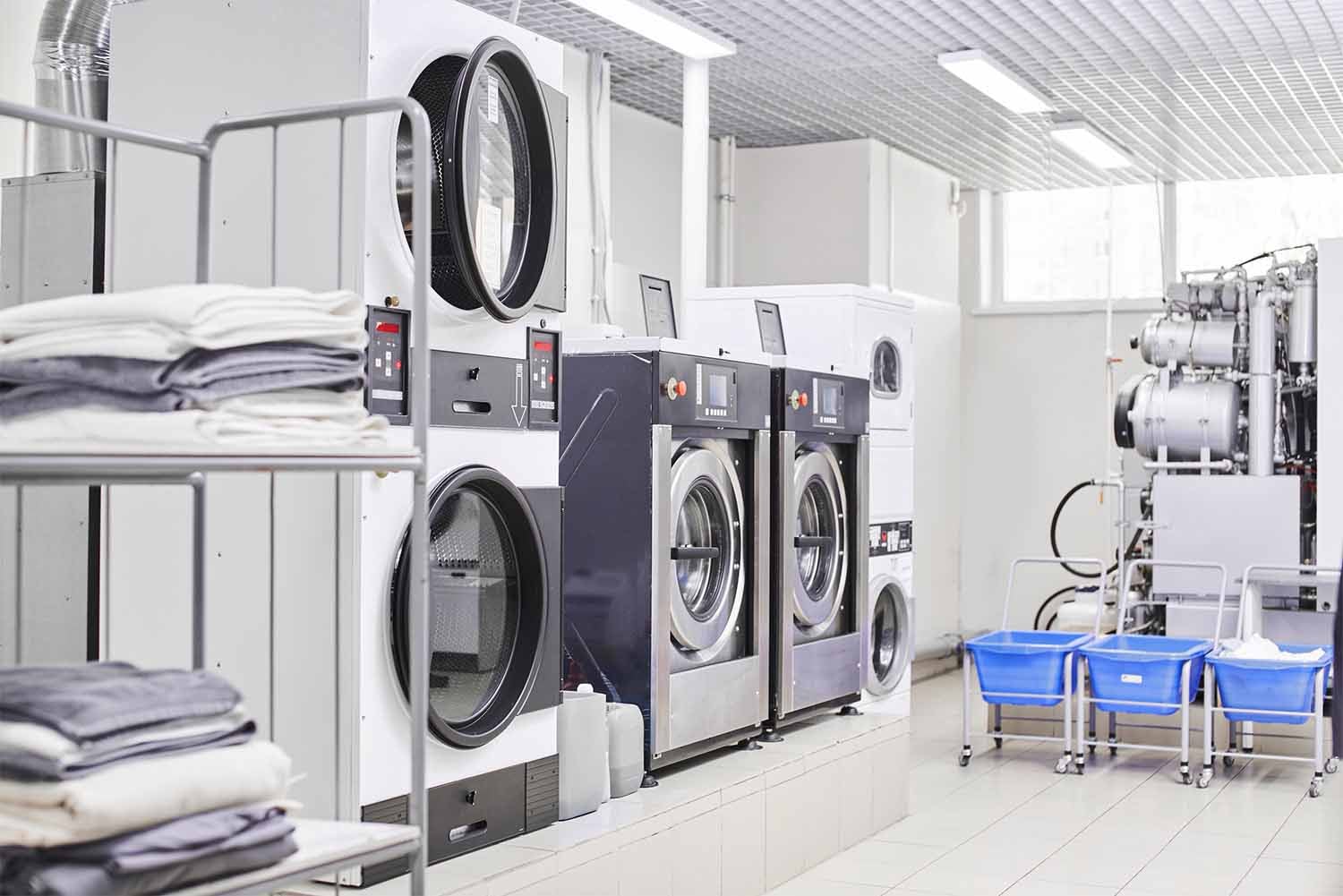The partnership between Grosvenor Contracts London Ltd and JLA Ltd shows that the prognosis for infection control in the NHS is extremely positive, thanks to OTEX Ozone Disinfection.
With so much pressure on NHS budgets, it’s no surprise that hospitals are scrutinising their spend in every department. And when it comes to laundry, operators are constantly torn between various options. In uncertain times, it can be tempting to stick with what you know, but with proven disinfection, instant verification, cost savings and the Department of Health (RRP1) recognition that come as part of the OTEX package, those at the frontline of healthcare laundry processing continue to champion low-temperature ozone technology. Here, two such industry leading partners explain why choosing to disinfect your laundry at low temperatures using ozone comes with unrivalled peace of mind.
While working on behalf of prominent healthcare clients as joint Managing Director at Grosvenor Contracts, Ollie Austen has observed at close quarters the dual between traditional thermal washing methods and ozone laundering. But with a requirement to provide hospitals and other NHS organisations with cost-effective services, help them meet HTM01-04 (formerly CFPP01-04) guidelines, deliver excellent wash quality and process large volumes to keep wards running smoothly on a daily basis, he believes there has only ever been one winner.
“Although Ozone laundering is a long-established technology with proven track record of being more effective than traditional thermal washing – as well as recognition as such from the Department of Health – the wash temperature debate can still be heated. But for us, nothing beats low temperature OTEX Ozone Disinfection. It wins hands down in the hygiene stakes by proving that disinfection has taken place on every cycle, and ambient water temperature washing also means linen, curtains, mops and cloths last longer. Some people question the merits of using anything less than a 75°C cycle, but why risk damaging fabrics by using high temperatures to achieve disinfection when you can gently clean them, extend fabric life, kill bacteria such as MRSA, E.Coli and C.difficile at typically less than 40°C – and print off a verification receipt to demonstrate HTM01-04 (formerly CFPP01-04) Best Practice after each wash?”
Grosvenor, having trail-blazed OTEX a number of years ago, continue to be healthcare’s lead-innovators in using ozone to wash linen, despite the method’s widespread plaudits from the medical profession – highlighted by renowned Consultant in ozone technologies, Dr Rip G Rice:
“Commercial laundries have found that adding ozone to wash soiled linen kills microorganisms including the prevalent methicillin-resistant Staphylococcus aureus (MRSA) and Clostridium difficile (Rice, 2009a*). Furthermore, ozone laundering of microfibre mops and cloths rids these cleaning materials of microorganisms without structurally damaging the microfibres themselves (Humphreys, 2012**).”
Stephen Baxter, JLA’s CEO, highlights the importance of teamwork in the laundry supply chain, and why learning from the past is essential in setting industry examples in the future.
“Our insights gained while working with healthcare organisations to develop on-premise laundry and infection control solutions have enabled us to deliver compliant, high performance systems to off-site commercial healthcare laundries too. We pioneered ozone laundry in 2004, and it’s pleasing to work in close partnership with a business like Grosvenor, that joins us in continuing to find ways of staying at the forefront of laundry processing – and setting the standards in cleaning, disinfecting and caring for what they wash.”
Jackie Hook, in-house Chemist at JLA, played a central role in developing OTEX almost ten years ago, and is proud of the mark it has made on the laundry industry since.
Ozone ticks all the boxes for a healthcare organisation. It disinfects on every cycle, eliminating user error; it works at low temperatures to save energy+; it can be used in large volumes in barrier washers with a range of machine sizes up to 90Kg; and although naturally powerful as a disinfectant, ozone washing increases the lifespan of fabrics. Other laundry methods have their place, but no other solution offers the all-round peace of mind that OTEX does. As the Rapid Review Panel acknowledged in 2009, put simply, Ozone is more effective in decontamination than traditional methods.˜
*Rice RG, DeBrum M, Hook J, Cardis D, Tapp C (2009a) Microbiological benefits of ozone in
ozone laundering systems. Ozone: Science & Engineering 31: 357–68.
**Humphreys PN, Hook J, Rout S (2012) Evaluation of the cleaning efficiency of microfibre cloths processed via an ozonated laundry system. J Infection Protection 13(4):104–8
+ Showcase Hospital Technology Review Report Number 8 (Southampton)
˜Basic research and development, validation and recent in use evaluations have shown benefits that should be available to NHS bodies to include as appropriate in their cleaning, hygiene or infection control protocols. (recommendation 1). Evidence shows that it is more effective in decontamination than current laundry systems. Department of Health, Sep ‘09




